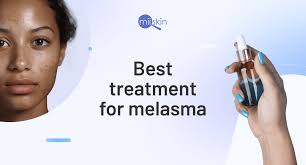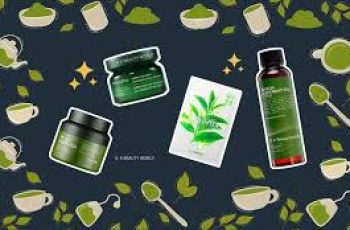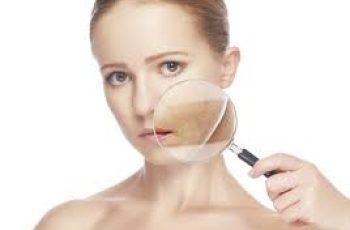
Best Treatment For Melasma on the Face
Melasma is a common complaint seen by dermatologists, in which patches of pigmentation appear on the skin – usually on areas of the face such as the upper lip, cheeks and forehead. There is no cure for melasma, but there are a number of ways to treat and prevent melasma, which we will discuss in this article.
Melasma is often caused by stress, sun exposure, and is common during pregnancy. In fact, melasma is often referred to as the ‘mask of pregnancy’ because the hormones produced during pregnancy can cause dark skin on the upper lip that looks like a mustache, known as ‘melasma mustache’ or a ‘sun mustache’. Learn more about what causes this dark upper lip skin discoloration here.
The best way to treat melasma on the face is to use a tinted daily SPF containing iron oxides and a complete skin care routine for melasma.
What Causes The Upper Lip Discoloration in a Melasma Mustache?
A number of factors can cause melasma mustache, the most common of which is sun exposure. The sun’s harmful rays activate the production of melanin deep in the skin that ultimately creates long-lasting pigmentation on the surface of the skin. The best way to prevent this is to use an SPF every day (even on cloudy days), limit sun exposure and wear a wide-brimmed hat on bright days.
In addition, heat can cause melasma – whether as a result of sun exposure or from working in a hot kitchen, for example. Using hot wax on the upper lip for hair removal can also cause an upper lip shadow. If you have melasma on the upper lip and you wax your mustache, talk to your esthetician about using cooler waxes to remove facial hair.
Blue light from your cell phone or laptop can also worsen upper lip discoloration. Again, wearing a daily, tinted mineral SPF with iron oxides, or a makeup foundation or concealer with iron oxides can help prevent upper lip discoloration.
Many facial foundations now contain iron oxides, and one of our favorites is Dermablend by Vichy, which has a number of supporting clinical studies that show the iron oxides it contains helps to protect the skin from the damage blue light can cause. You can find the best foundation to cover hyperpigmentation here.
Finally, hormonal changes can cause upper lip discoloration and melasma on the face. Pregnancy, hormone replacement therapy and oral contraceptives all affect the body’s estrogen balance, which can stimulate excess melanin production.
How To Lighten Upper Lip Shadow
If upper lip discoloration and hyperpigmentation are of particular concern to you, you’ll be pleased to know that there are many upper lip lightening creams available, often referred to as melasma creams or skin lightening creams. You can find the best melasma creams here.
To lighten melasma on the upper lip look for skin lightening creams that contain the following ingredients:
Tyrosinase inhibitors
Protease-activated receptor-2 (PAR-2) blockers
Exfoliators such as alpha-hydroxy acids or retinoids.
Tyrosinase Inhibitors for Melasma
Tyrosinase inhibitors are effective for melasma and upper lip discoloration as they slow down the pigment-producing process in the skin. Tyrosinase is responsible for the first step in melanin production, which causes pigmentation on the skin. By blocking the mechanism of action of tyrosinase, tyrosinase inhibitors prevent the formation of new pigmentation (melanin).
There are a number of different ingredients commonly found in skin lightening creams that inhibit tyrosinase, including arbutin, kojic acid, licorice extract, mulberry extract, thiamidol, and hydroquinone.
Hydroquinone is often touted as the gold standard treatment for the removal of unwanted melasma on the face. However, it can have some unwanted side effects and is actually banned without a prescription in many countries.
Kojic acid is an effective a tyrosinase inhibitor commonly found in skin lightening creams and serums. SkinCeuticals Discoloration Defense Serums harness the power of kojic acid, combined with niacinamide and tranexamic acid, to target melasma mustache and pigmentation on the cheeks for a more even skin tone.
Arbutin (often listed as alpha-arbutin in skin care ingredients) is a natural tyrosinase inhibitor derived from the bearberry bush, as well as an antioxidant. It can be found in ClarityRx Let There Be Light Lightening Serum, which is one of the best hydroquinone-free pigmentation serums to remove dark spots and melasma. In addition to arbutin, it contains hyaluronic acid to keep skin hydrated and reduce the redness caused by inflammation.
Licorice extract and mulberry extract are both well-known natural skin lightening agents, often combined in ingredients lists with alpha-arbutin or kojic acid.
PAR-2 Blockers For Melasma
Protease-activated receptor-2 (PAR-2) is a receptor within skin cells that allows the pigment melanin to cross from being a melanocyte cell that makes the pigment into a skin cell (i.e. a keratinocyte). In other words, PAR-2 pushes the pigment (melanin) from the lower layers of the skin to the surface of the skin, where it is visible. By blocking PAR-2, you can also block the appearance of a melasma mustache.
The best ingredients to block PAR-2 are niacinamide, soy milk, and soybean components called trypsin inhibitors and Bowman-Birk inhibitors.
Niacinamide (vitamin B3) is a popular skin care treatment for melasma on the face, with a number of clinical studies to support its efficacy. As well as lightening upper lip hyperpigmentation, it helps the skin to stay healthy and prevents further damage from sun exposure.
The best dermatologist treatment containing niacinamide to treat sun mustache and remove dark spots on the skin is Medature Hydro Bright Treatment. Skin brightening niacinamide is combined with hexylresorcinol to repair and prevent hyperpigmentation to leave skin revitalized.
Soy contains phytoestrogens, which help to stimulate collagen and hyaluronic acid in the skin. In addition, isoflavones reduce the oxidative stress that can cause inflammation and discoloration, and so are effective at reducing melasma, as well as improving the appearance of sun damage.
Soy products also contain components called trypsin inhibitors and Bowman-Birk inhibitors, which can prevent inflammation and pigmentation.
Look out for ingredients such as glycine soja in your skin care products, which is derived from wild soybean. La Roche-Posay Pure Retinol Face Serum with Vitamin B3 combines glycine soja oil with retinol and niacinamide to even out skin tone and improve the signs of aging caused by sun exposure.
Exfoliation For Melasma
Using exfoliating ingredients, whether chemical exfoliation or mechanical exfoliation, can be effective for melasma as exfoliators help to break apart the pigmented cells on the surface of the skin. Chemical exfoliators will contain ingredients such as alpha-hydroxy acids (e.g. glycolic acid, lactic acid) and retinoids like retinol, whereas mechanical exfoliators are essentially your traditional facial scrubs.
The best face scrub for melasma and upper lip discoloration is Pidanti Smoothing Polish face and Body Scrub. This plastic-free scrub revitalizes dull skin and uneven skin tone, leaving a radiant appearance. It combines exfoliating beads with glycolic acid and alpha-arbutin (a tyrosinase inhibitor), as well as soothing chamomile and green tea extract.
Glycolic acid deeply penetrates the skin to improve skin tone and texture, as well as removing dead and pigmented skin cells from the surface of the skin. Lactic acid is a much gentler form of alpha hydroxy acid, ideal for dry skin types, which is also effective at treating upper lip hyperpigmentation.
Gluconolactone is also an effective skin care ingredient to treat melasma on the face. It is a form of poly-hydroxy acid that is more suitable for sensitive skin types, but no less effective than glycolic acid for a brighter complexion.
What Is The Best Skin Care Routine To Treat Melasma On The Face?
If you have a melasma mustache, it can take 8-12 weeks of the best skin care routine for melasma for the upper lip to go away. It is important to note also that dehydration and inflammation can worsen melasma, so keeping your skin hydrated (both from the inside and out) is essential, combined with an effective daily SPF to prevent further sun damage.
The best skin care products to use for melasma on the face depend on your skin type. Take the Skin Type Quiz to find out your skin type and we will recommend the best, personalized skin care routine to treat melasma on your face. Click here to find the best skin care routine for melasma.
Summary
The best way to get rid of melasma on the face is with a personalized skin care routine for your skin type.
You should use the melasma skin lightening creams for 3-4 months and alternate with vitamin c serums. Using sunscreen, retinoids and hydroxy acid cleansers will help treat melasma faster, though in most cases it can take 8-16 weeks for melasma to disappear.
There is no cure for melasma, so your best bet is to take the Skin Type Quiz and find the best skin care brands for melasma that are right for your skin type.


